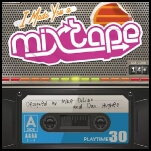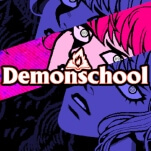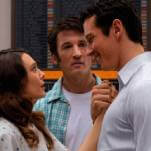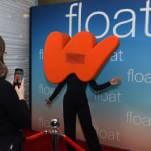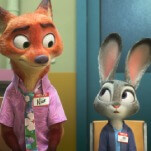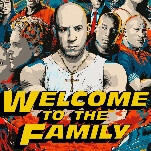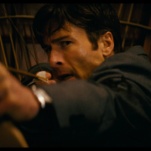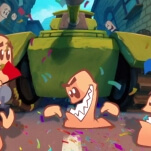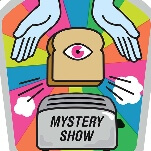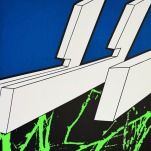Board games are always on the table at PAX Unplugged
Keith Law recaps every board game he played at this year's PAX Unplugged event.
Images, clockwise from top left: Night Soil (Grail Games); I Made You a Mixtape (Massive Asterisk); Bohemians (Portal Games); Baghdad: The City of Peace (Alley Cat Games)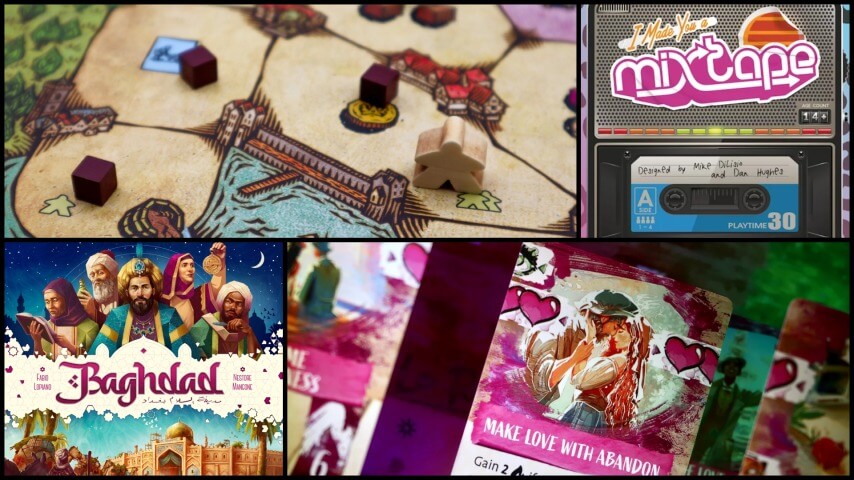
The tabletop gaming convention PAX Unplugged was earlier than usual this year, with the 8th edition taking place at the Philadelphia Convention Center this past weekend. Rumors that the show would be smaller due to the date change appear to be have been unfounded, as the show took up the entire main expo hall as usual, with publisher booths, tournaments, free play, and the lending library, as well as the large First Look and Unpub sections on the center’s fourth floor.
Unlike most previous years, I focused on playing games in full and only did a couple of publisher meetings, for two reasons: I didn’t see as many new game announcements for the show as I had in past years, and playing games in full is more fun. So with that in mind, here’s the rundown of my time at PAXU 2025.
The best game I played was Baghdad: The City of Peace, and it wasn’t particularly close. This upcoming release from Alley Cat Games, which will be fulfilling Kickstarter pledges in December, is the latest game from designers Fabio Lopiano and Nestor Mangone, who worked together on last year’s Shackleton Base. Baghdad is most similar to Lopiano’s game Merv: The Heart of the Silk Road in look, feel, and playing style; both are tight economic games at heart, with gorgeous, brightly-colored boards that make the game easier to play and see. In Baghdad, players compete to build the “Golden Palace” (which I assume means the Palace of the Golden Gate) while also constructing buildings, collecting artifacts, and trading and selling goods along the Tigris. The game has several mechanics that were either new to me or deployed in new ways, and despite its complexity and two hour-plus playing time, turns were really quick and it was easy to spend the interim between them thinking through all my options so I was ready to rock. I wanted to try another beautiful, complex game from Alley Cat called Ada’s Dream, but couldn’t get to those tables; U.S. backers are receiving their copies as we speak, and the publisher says it’ll be available via their website soon.
I was slightly disappointed that Baghdad passed my second-favorite game of the convention, Night Soil, which is literally a game about shit—“night soil” is a euphemism for human feces, and in the game, you’re competing to make the most money from shoveling poop into the Thames. It’s actually a highly competitive area control game with some take-that aspects and a devious worker-placement system where you have to claim areas to gain workers for the next round, with a chance you’ll end up with zero if you’re not careful.
I Made You a Mixtape has an “I split/you choose” mechanic, but that ends up a pretty minor part of the game. The game has 90 song cards—real song titles, but no artist names, so nobody’s getting sued here—each of which has a number from one to three on the left or right side, indicating the song’s length and whether it has to go on side A or side B of your cassette. There are six music genres, and each card has a ribbon flowing from the top of the card to the bottom. You’ll score points for how close you came to getting the two sides of your tape balanced in total song length, for how well your songs “flowed” into each other based on whether the ribbons lined up, and for how many songs you got in each genre, where more songs in fewer genres is better. You draw three cards on each turn, split them into two piles, and offer them to your neighbor to the left, so you’re trying to see what other players need and maybe going for different genres yourself. Also, there is huge value here in someone breaking into song with every draw.
Papyria is the latest game from Bernd Eisenstein, the designer of Discordia, who specializes in games that are long but aren’t that heavy or complex. That’s true of Papyria, which has a two-track mechanic where the amount of victory points you can score on any single turn can not exceed your place on the knowledge track, so early in the game you’re trying to gain knowledge so that later you can rack up bigger bonuses. You lay tiles to create your landscape with various features on it that you can upgrade as the game progresses, although you can score points for the upgraded or non-upgraded versions. The best part of the game is that you can score points on most of your turns—there are scoring tiles everywhere and when you pick one up you gain some multiple based on the matching feature or tile type. The worst part is the utterly inscrutable rulebook; we played it for about a half an hour before I realized we’d done something completely wrong (the knowledge track) and joked that I was going to flip the table over (okay, maybe not entirely joking).
1975 White Christmas is the tenth title in Looping Games’ 19xx series, which is highlighted by 1985 Channel Tunnel, from the designers of The Red Cathedral and The White Castle. 1975 White Christmas asks players to help in Operation Frequent Wind, the evacuation of Saigon ahead of the city’s takeover by the North Vietnamese army, with each player using two helicopters to visit the rooftops and collect meeples to return to their aircraft carriers. You can get points based on the specific meeple types, and for matching sets on the special mission cards, while you can also upgrade your helicopters and aircraft carrier to make future missions a little easier. It’s a solid play, but I don’t think the game really serves the theme here; this is a tragic moment in world history, and the evacuation effort left many people behind, while the need to evacuate and the cost involved was a symbol of the giant failure that was the United States’ involvement in Vietnam. The game’s mechanics don’t acknowledge that in any way; if any turn ends with more meeples on a rooftop than there are spaces, you simply return those to the box. No one loses points or anything else for doing so.

